The famous statues in our list were are all indented to stand outside to face the elements, though some have been moved to a museum since their creation.
10. Little Mermaid

The statue of The Little Mermaid sits on a rock in the Copenhagen harbour at Langelinie in Denmark. Tourists visiting for the first time are often surprised by the relatively small size of the statue. The Little Mermaid statue is only 1.25 metres high and weighs around 175 kg. Designed by Edvard Eriksen, the statue was erected in 1913 to commemorate a play of the Little mermaid. The poor lady has lost her head several times but has each time been restored. Copenhagen officials announced that the statue may be moved further out in the harbour, as to avoid further vandalism and to prevent tourists from climbing onto it.
9. Lions of Delos
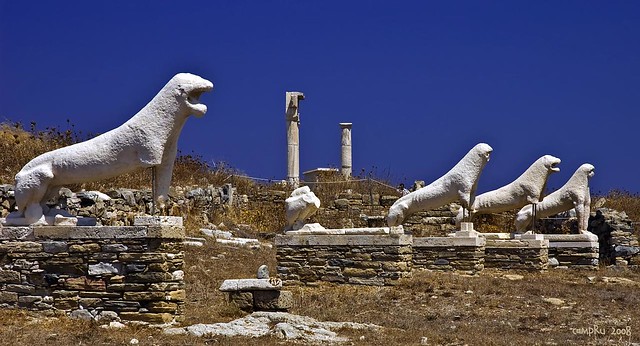
Located near Mykonos, the island of Delos is one of the most important mythological, historical and archaeological sites in Greece. Delos had a position as a holy sanctuary for a millennium before Olympian Greek mythology made it the birthplace of Apollo and Artemis. The Terrace of the Lions was dedicated to Apollo by the people of Naxos shortly before 600 BC and had originally 9 to 12 marble guardian lions along the Sacred Way. Only 5 lions survived and from 3 lions fragments exists. The weather-battered originals were moved to the Archaeological Museum of Delos in 1999.
8. Mother Russia Statue
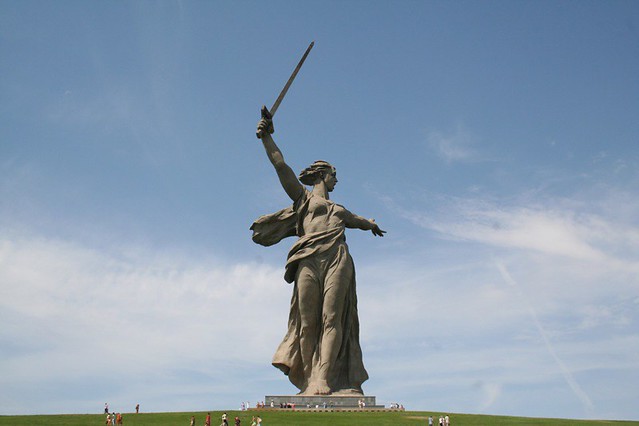
The Mother Russia statue, also called The Motherland Calls, is a famous statue in Mamayev Kurgan in Volgograd, Russia commemorating the Battle of Stalingrad. When the memorial was dedicated in 1967 it was the tallest sculpture in the world, measuring 85 metres (279 feet) from the tip of its sword to the top of the plinth. The figure itself measures 52 metres (170 feet), and the sword 33 metres (108 feet). Two hundred steps, symbolizing the 200 days of the Battle of Stalingrad, lead from the bottom of the hill to the monument. The statue is currently leaning due to groundwater level changes causing movement of the foundations.
7. Olmec Heads

The Olmec were an ancient Pre-Columbian civilization living in the tropical lowlands of south-central Mexico, in what are roughly the modern-day states of Veracruz and Tabasco. The Olmec civilization flourished roughly from 1400 BC to about 400 BC. The most recognized aspect of the Olmec civilization are the enormous helmeted heads. The heads are thought to be portraits of rulers, perhaps dressed as ballplayers. No two heads are alike and the helmet-like headdresses are adorned with distinctive elements. There have been 17 colossal heads unearthed to date. The heads range in size from the Rancho La Cobata head, at 3.4 m high, to the pair at Tres Zapotes, at 1.47 m.
6. Mount Nemrut
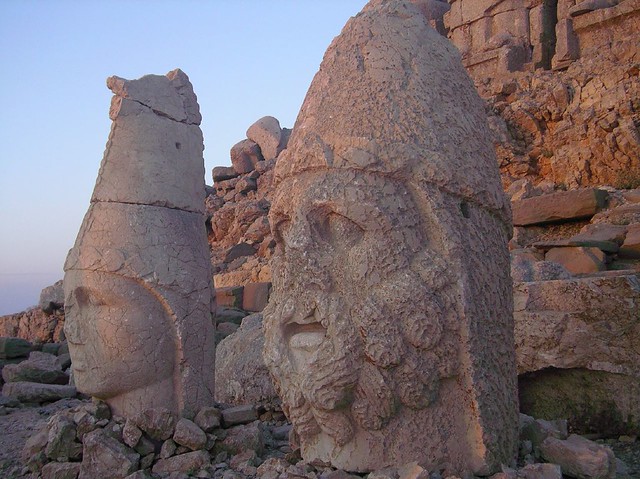
Nemrut is a 2,134 meter (7,001 ft) high mountain in southeastern Turkey, near the city of Adiyaman. In 62 BC, King Antiochus I Theos of Commagene built on the mountain top a tomb-sanctuary flanked by huge statues (8–9 m/26–30 ft high) of himself, two lions, two eagles and various Greek, and Persian gods. Since their erection, the heads have toppled from the bodies and lay scattered throughout the site. The summit of Mount Nemrut provides a great view of the surrounding mountains. The main attraction is to watch the sunrise from the eastern terrace which give the bodyless heads a beautiful orange hue and adds to the sense of mystery of the place.
5. David Statue

David is a masterpiece of Renaissance sculpture sculpted by Michelangelo from 1501 to 1504. The 5.17 meter (17 ft) marble statue portrays the Biblical King David in the nude. Unlike previous depictions of David which portray the hero after his victory over Goliath, Michelangelo chose to represent David before the fight contemplating the battle yet to come. To protect it from damage, the famous statue was moved in 1873 to the Accademia Gallery in Florence in Italy, where it attracts many visitors. A replica was placed in the Piazza della Signoria, at the original location.
4. Great Sphinx
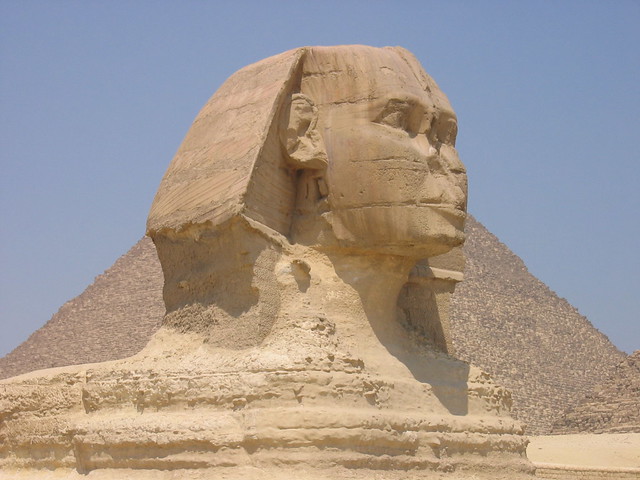
Located at the Giza Plateau in Egypt, The Great Sphinx is one of the largest and oldest statues in the world, but basic facts about it, such as who was the model for the face, when it was built, and by whom, are still debated. It is the largest monolith statue in the world although it is considerably smaller than the Pyramids around it. Despite conflicting evidence and viewpoints over the years, the traditional view held by modern Egyptologists at large remains that the Great Sphinx was built in approximately 2500 BC by the pharaoh Khafre, the supposed builder of the second pyramid at Giza.
3. Statue of Liberty

The Statue of Liberty, a gift from the people of France to celebrate the centennial of the signing of the United States Declaration of Independence, stands upon Liberty Island and is one of the most famous symbols in the world. It represents a woman wearing a stola, a radiant crown and sandals, trampling a broken chain, carrying a torch in her raised right hand and a tabula ansata tablet. The construction of the statue was completed in France in July 1884 and arrived in New York Harbor the following year. From 1886 until the jet age, it was often one of the first glimpses of the United States for millions of immigrants.
2. Christ the Redeemer

Christ the Redeemer is a statue of Jesus Christ in Rio de Janeiro, Brazil. Located at the peak of the 700 metres (2,300 ft) Corcovado mountain, it provides a sweeping panorama from the interior of Guanabara bay to the north, to Lagoa Rodrigo de Freitas to the south. The statue stands 39.6 metres (130 ft) tall, including its 9.5 metres (31 ft) pedestal, and 30 metres (98 ft) wide. It is one of the tallest of its kind in the world though the statue of Cristo de la Concordia in Bolivia, is slightly taller. A symbol of Christianity, the famous statue has become an icon of Rio and Brazil.
1. Moai
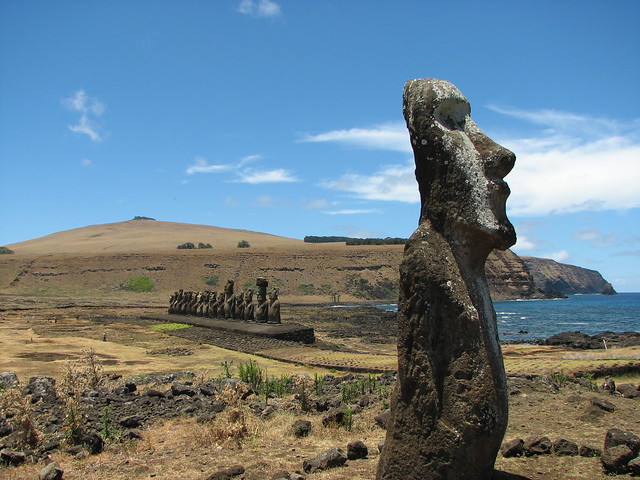
Source
